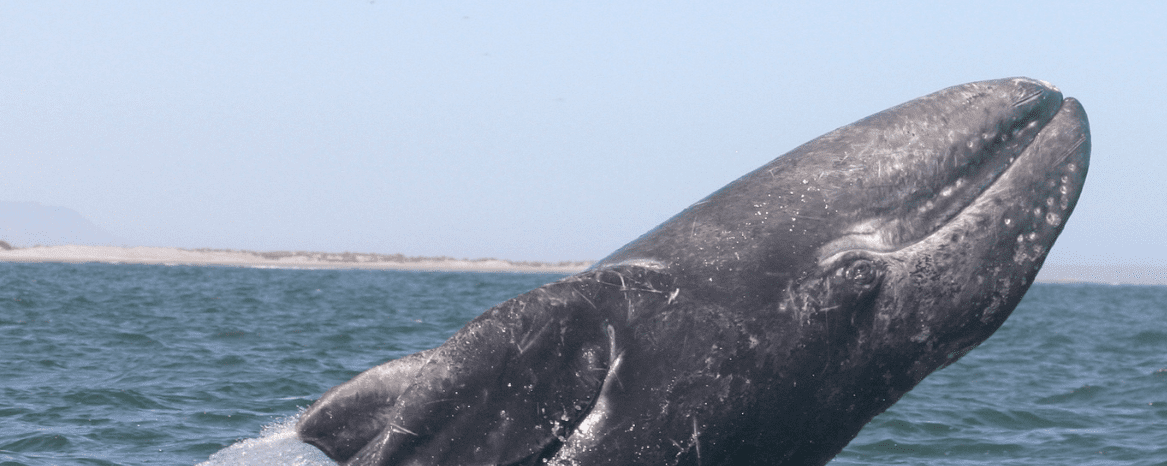
Looking to spot a gray whale in the wild? Be sure to look for short flippers and seven to fifteen knob-like bumps on the back part of their spines called ′knuckles.′ Gray whales are often confused with humpback whales, who have a similar hump on the back of their spines, but are notably missing a dorsal fin from their backs — a key giveaway you′ve spotted a gray whale!
Gray whales are most commonly found in coastal eastern and western regions of the north Pacific Ocean. They are big ocean explorers, traveling over 10,000 miles annually as part of their migration pattern. These behemoths can grow to be almost 50 feet long and can weigh up to 40,823 kilograms (90,000 pounds). Like many large whales, gray whales reproduce slowly — female gray whales are pregnant for an average of 12-13 months before giving birth to a single calf. These calves are born a dark gray color, but as they age, their skin becomes a light gray or even a warmer, brown-gray color with patches of lighter skin. Some reports have found that these ocean giants can live up to 75 of 80 years.
Gray whales are filter feeders, gathering food on the ocean floor. They can stay underwater for up to 15 minutes before having to come up for air, allowing them to dive to the bottom of the water to collect their food. To feed, these mammals turn onto their sides, and suck sediment and critters into their mouths through their baleen plates, which act as filters, trapping their food.